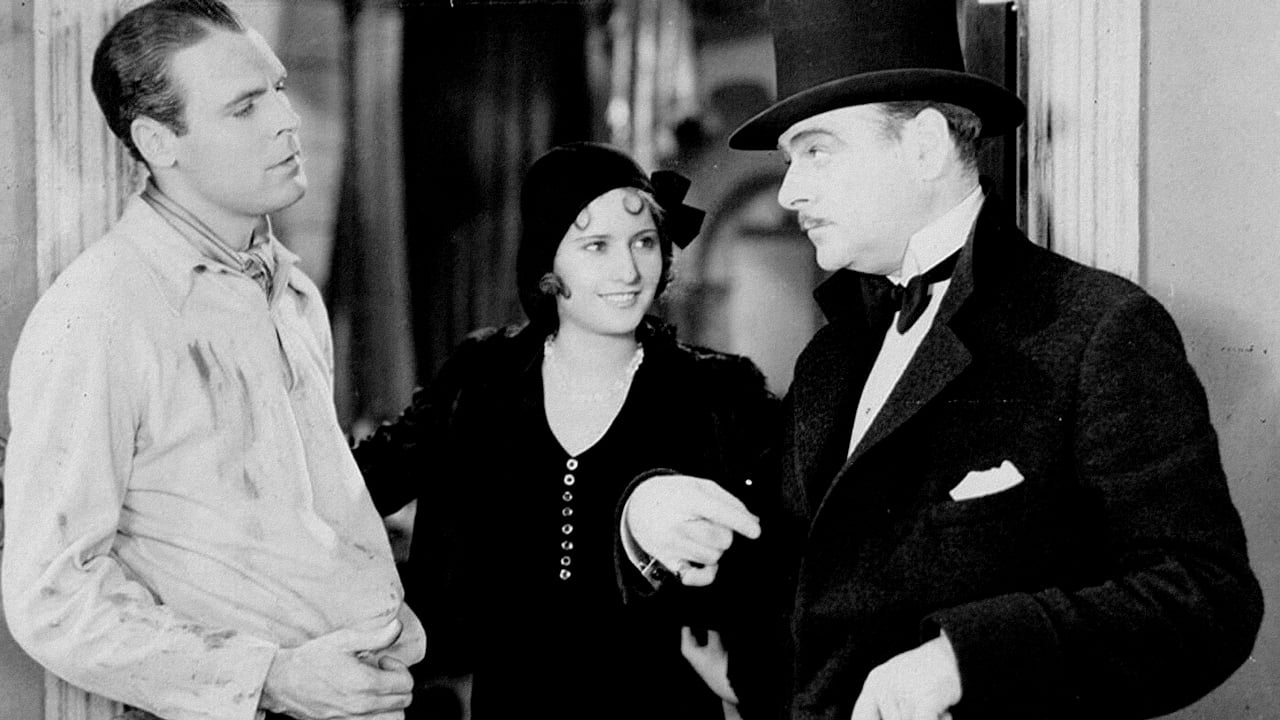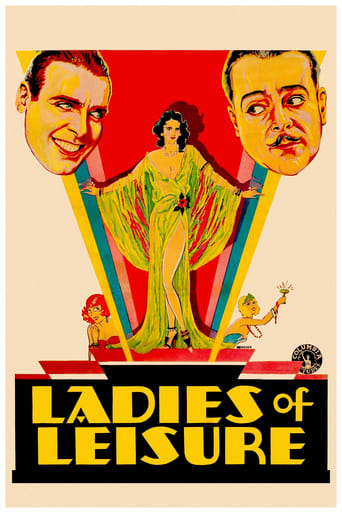

" . . . don't they raise the bars (to her leading a normal life) for her?" Gold-digging hooker Kay Arnold plaintively asks her latest "sap's" Mommy. By Kay's logic, Mrs. Strong should welcome her into the Railroad Mogul Family with open arms upon Kay's assertion that she's no longer a Walking Venereal Disease. IT'S A WONDERFUL SEX LIFE, director Frank Capra contends during LADIES OF LEISURE. Capra seems to be preaching that the Robber Barons and the Barin' Bobbers should all be friends (to anachronistically paraphrase OKLAHOMA!). Speaking of Barin' Bobbers, most of Kay's infamous nude silhouette strip scene beginning at 42:32 midway through her first sleep-over at Sap Jerry Strong's Bachelor Pad has gone missing from the surviving print of this 1930 Anything Goes Era flick, thanks to the Pope's over-zealous Scissormen who began snipping the "Good Bits" (or "Pinkies") from America's cinematic output, both retrospectively and Forward even until Today, back in 1934. Though some have complained about this method of "filling the Stacks" of the Secret Vatican Library, can you imagine how many Altar Boys and First Communion Girls have been saved from Total Debauchery by this trove of FORBIDDEN H0LLYWOOD?
... View MoreThis early talkie (so early I understand there was a silent version shot simultaneously) introduced me to the actor Lowell Sherman. Sherman plays drunken cad/best friend to leading man Ralph Graves, who portrays a rich artist. Barbara Stanwyck plays a roaring twenties-esque party girl who ends up modeling for Graves.Stanwyck is excellent and captivating. This was early in her career, and it must've been clear that she was destined to become a star after this film came out. Ralph Graves, on the other hand, turns in one of the worst performances I've ever seen. Stiff, wooden, he almost sinks the picture. He doesn't connect emotionally with his own character or anyone else's. His career seemed to tank after this film. No surprise there. Lloyd Sherman plays your proto-typical cad, and he's the best thing in the movie. He's a scoundrel, overtly trying to get down Stanwyck's pants while still maintaining his charm. Though you're supposed to root against him, you kind of like this ne'er do well. He fully embodies the role, and as far as talkies are concerned, I'd say he invented the drunken cad, the inebriated sophisticate. Actors as disparate as William Powell (think Thin Man) to Dudley Moore (think Arthur) owe Sherman a debt of gratitude. Like Ralph Graves, Sherman is kind of forgotten today. It's not because, like Graves, he didn't have the goods to last and make his mark. It's because Sherman died a few years later, of pneumonia. At the time of his death, he was just starting to direct as well. If you love charming movie scoundrels, raise a glass in Mr. Sherman's honor. He would approve.
... View MoreLADIES OF LEISURE, adapted to the screen from a play, is another in a long line of Frank Capra-directed films that pits the lower orders against the upper through the device of a romantic entanglement. In this case it's "lady of leisure" (read: prostitute or good time gal) Barbara Stanwyck against the slightly bohemian scion of a wealthy banking family (Ralph Graves). The theme of the movie is set right away as we see a bustling Manhattan street at night. Suddenly bottles fall from the sky and explode on the sidewalk, narrowly missing pedestrians. They are coming from a group of drunken young women who are tossing them over a penthouse terrace balcony for kicks. These party girls have been hired by dissolute swell Lowell Sherman, a friend of Graves, who, offended by the crudity of the party scene, hops into his roadster for a drive into the country. He stops by a lake where he sees a young woman (Stanwyck) dressed in an evening gown rowing herself ashore in a canoe. It turns out she too is a party girl and is also escaping a wild party, this time on a yacht. He finds her attractive and offers her a ride back to the city. As is her habit, she picks his pocket while he's driving. Thus the plot line is set. We know what will happen by the end. Along the way we are treated to a beautifully etched characterization by Stanwyck who covers a wide range of acting territory from crude and lowdown to transcendentally idealistic. The equally inventive Marie Prevost provides generous support as her overweight roommate. Lowell Sherman, playing the same type of hard-drinking, pleasure-loving sophisticate as he often did in other movies (Bachelor Apartment, What Price Hollywood), is also excellent.For whatever reason, Ralph Graves cannot perform like a flesh and blood human being. His movements are stiff and unmotivated, his emotions seem forced and sudden. Even the expression on his face looks pasted on from some other character in some other movie. All wrong. One is not surprised to see that within a few years he was playing uncredited bit parts in third-rate movies. His silent film credits are numerous and go back to the teens so one can only wonder what his appeal was. He is not bad looking, so one must assume that his substantial silent film career owed a lot to his appearance.
... View More23 year old Barbara Stanwyck became a leading film star in 1930 with the release of LADIES OF LEISURE, after having starred in two flops in 1929. This is a very slender story of a good time girl who falls in love with a millionaire's son who basically is just interested in her as a model for a painting he wants to do. Given how free-wheeling and blunt most early talkies were on morality, this movie is surprisingly discreet about Stanwyck's character's past. We are supposed to read into the story she's a prostitute (or more accurately, a former mistress) - but in her first scene she is fleeing a yacht party that's too risqué for her!! Stanwyck rings honesty out of a cardboard script and she's got good support from three second-tier silent stars who are quite good in talkies - Ralph Graves as the object of her affection, Marie Prevost as her wisecracking, less prudish pal, and especially Lowell Sherman as Graves' drunken buddy who is very open to being Stanwyck's next sugar daddy yet the best scene is the confrontation being Stanwyck and Graves' mother, superbly played by a somewhat unsung character actress, Nance O'Neil.The movie's minor fame today rests on it being Stanwyck's first screen success and an early hit for director Frank Capra yet Capra's direction is rather dull and often awkward and the movie is very badly edited with some scenes conspicuously made up of different takes with shot angles and acting rhythms off among other giveaways (to say nothing of the scene where Graves answers the phone and says "Hello" way before the receiver is anywhere near his mouth!!) As mentioned by another reviewer, a "silent" version of the film was also shot (the smaller studios like Columbia were still making silent versions of some of their films up to 1931 for the ever dwindling number of movie theaters that were still not wired for sound), I don't know anything about the silent version being available on video and not the sound film, possibly the silent version fell into public domain and that's why that version alone is on tape, however the sound version still exists and was shown on American Movie Classics in the early 1990's back when that channel actually showed classic movies. Turner Classic Movies, on the other hand, has so many MGM and Warner Bros. films at their disposal they hardly need to go elsewhere for films so it's not likely they will bother to pick up rights to this movie from Columbia. I wouldn't be surprised, however, one day to see it and a number of other early Capra talkies together in a boxed DVD set given his legend as a director.
... View More